La Tourette | Near Lyon, France
Owen Jarvis, 20 October 2025
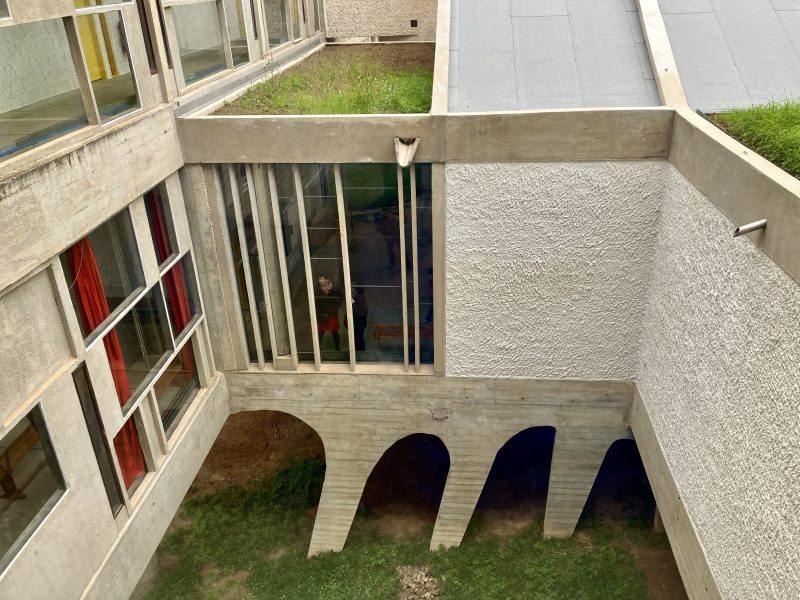
Photo: angles, features of interest everywhere
Outside work, I have a guilty pleasure: brutalism. The poured concrete, the audacity, the way it tries to shape not just buildings but lives. Years ago, I skipped Rio to see Brasília — a city designed as if people could be organised as neatly as streets. Last Sunday, in the rain, I found myself at Couvent Sainte-Marie de La Tourette outside Lyon. I wasn’t alone. The tour was full. When buses failed, a Japanese tourist walked three hours to get there.
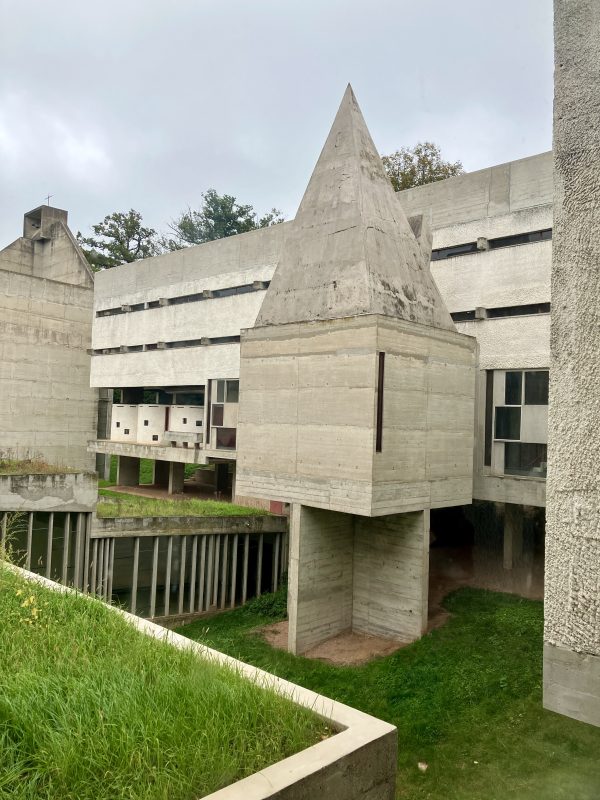
photo: that’s a chapel, no distractions!
Why do we still flock to these places?
Because however flawed, La Tourette represents design as a social and spiritual project.
After the war, many sought refuge in faith. La Tourette was built between 1953 and 1960 by Le Corbusier for 100 Dominican brothers who needed more room. It lasted barely a decade as intended. By 1968, when revolution hit Paris, most monks left. Only nine remain today. The monastery survives as a monument, but only partly a home. But that’s precisely what makes it fascinating. The community failed. The idea of architecture as a tool for shaping communal life didn’t.
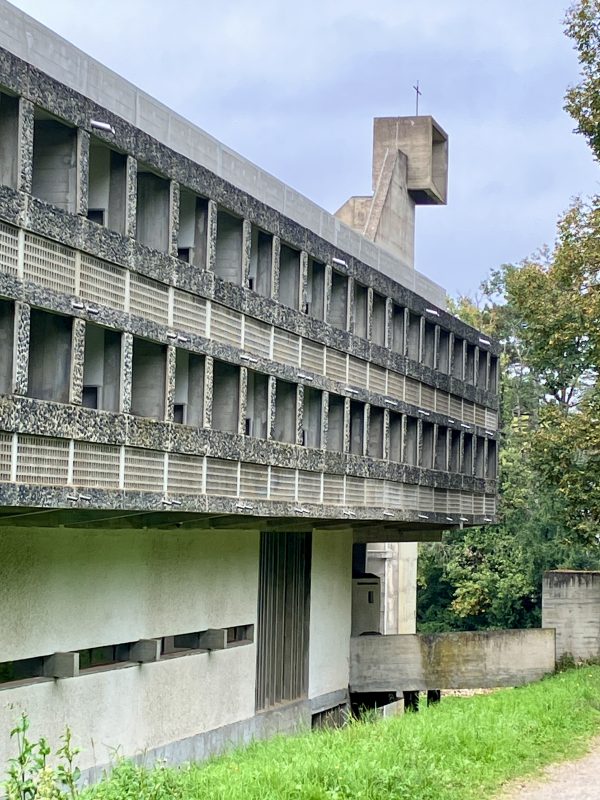
Photo: accommodation block for 100.
Why we love dead “great” architects
I believe we find dead “great” architects easier to love. Their once-radical ideas no longer threaten to dominate our world. We now choose what we want from them. At La Tourette, Corbusier imagined spaces that would order and support communal life. Today, just 6% of new buildings in the UK involve an architect at all. The rest? Often, cookie cutter designs, minimum standards, maximum returns. Brutalism may be out of fashion, but people still travel the world to see La Tourette. Not because it’s perfect, but because it dares to be about something bigger than profit.
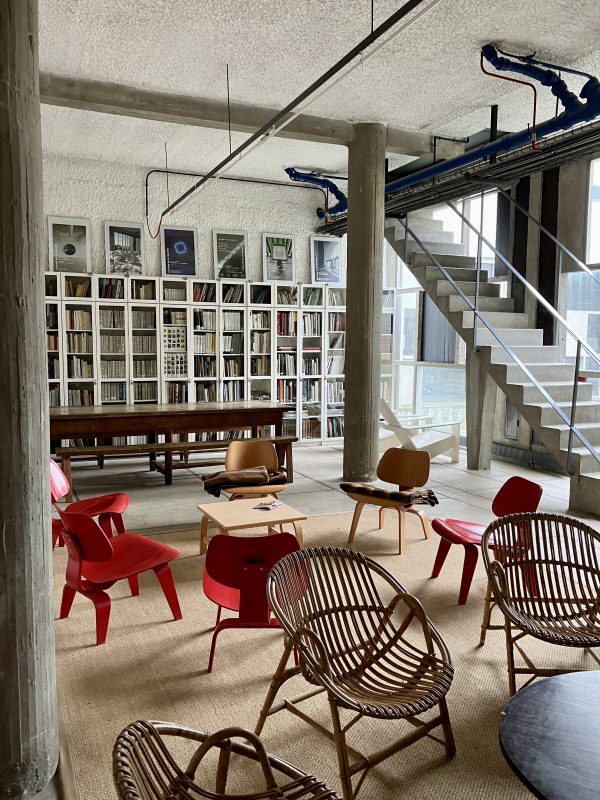
Photo: monastic common room – walls are moveable, pillars not, pipes exposed and colour coded for easy access
Form follows community function
The monastery is organised like a diagram of how a community might live together.
- Cells at the top for solitude.
- Shared study and dining in the middle.
- Visitor areas at the ground floor.
Corridors are social arteries, slit windows narrow your focus, terraces and pilotis create layered shared spaces. Corbusier added “sugar cubes” help you connect inside to outside world. This isn’t neutral design. It’s intentional. It’s ideological.
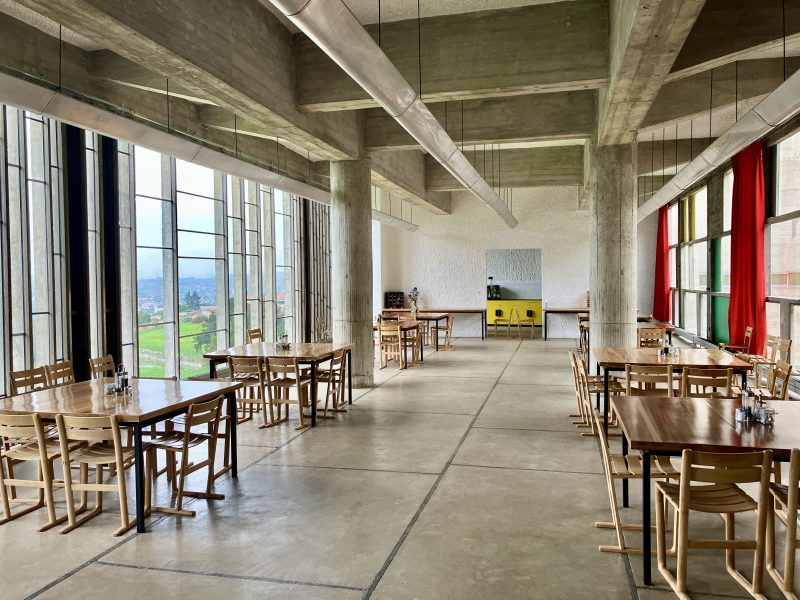
Photo: the austere canteen – no soundproofing but you eat in silence!
Small details, big politics
At La Tourette, black paint patches site beneath handles, walls are movable, pipes are shown and colour coded, all speak to something bigger:
- That shared life leaves traces.
- That spaces should be legible to those who live in them.
- That buildings should adapt to people, not just the other way around.
Contrast that with how most new housing is built today: generic, inflexible, profit-maximising. It’s hard not to feel a pang of longing to live cladded in Corbusier’s concrete.
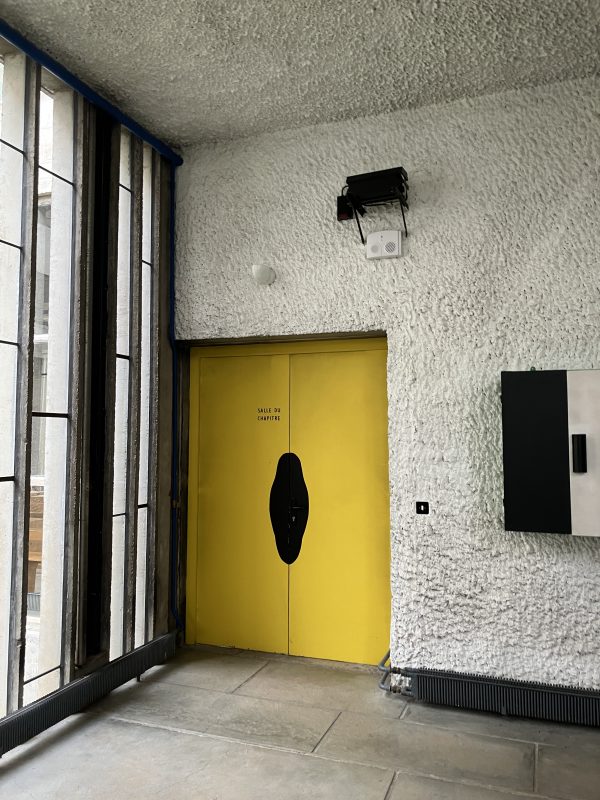
Photo: brilliant touches – black paint hides dirty hand prints
We are meaning-seeking creatures
What struck me most was the meaning embedded in the design. This wasn’t a shell to fill with life. It was built around a shared purpose. Even in secular communities, meaning matters. When spaces align with collective values — care, sustainability, democracy — they create a kind of belonging that planning documents and glossy brochures can’t. A shaft of light can prompt stillness. A table can build trust. Meaning is architecture’s quiet infrastructure.
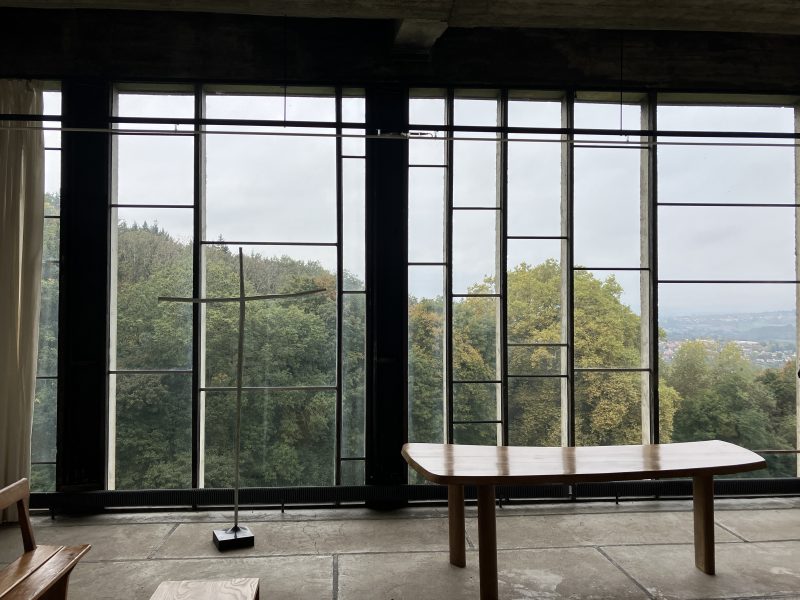
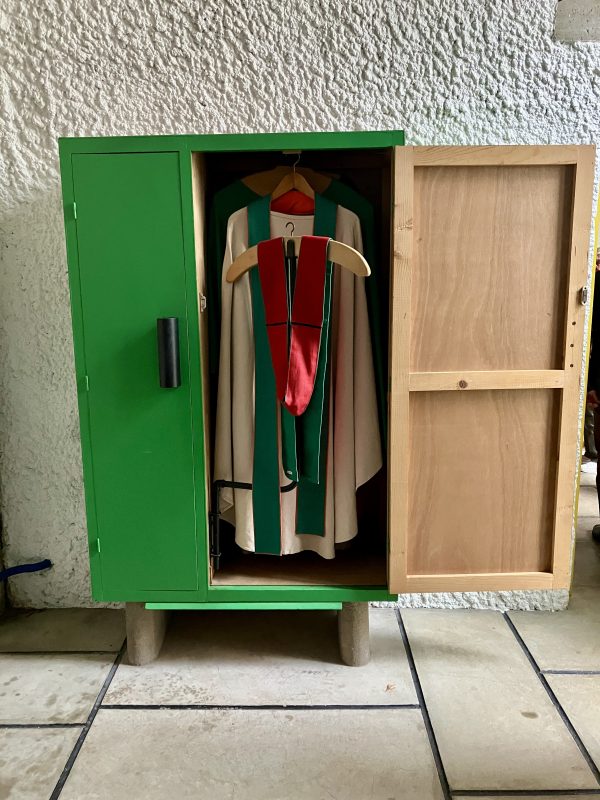
Lessons for cohousing — and beyond
La Tourette’s monastic life may be fading, but its architecture endures.
- Design for interaction, not just minimum space.
- Embed purpose in form.
- Make adaptation easy by users.
- Honour the ceremony in everyday moments.
- Pay attention to the small things — they can hold power and meaning.
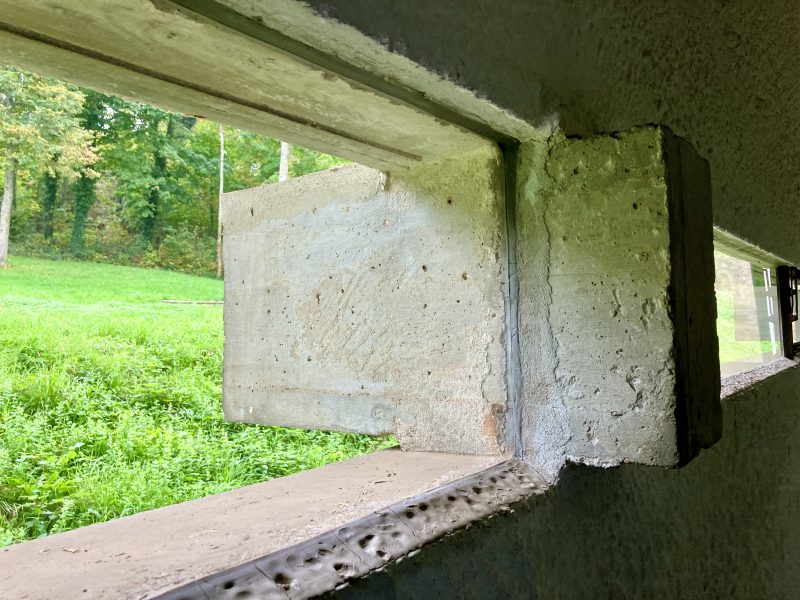
Photo: “the sugar lumps” connecting nature with interior world
A quiet power — and a provocation
We rarely build monasteries today. And mainstream housing rarely builds with conviction. We outsource housing to volume house builders who aren’t tasked with creating meaning, only units. Meanwhile, people travel for hours to stand in front of old concrete that once held our beliefs in something bigger.
Pause for thought?
Form follows community function. Meaning anchors place.
And the best collective spaces aren’t designed to be flipped or optimised — they’re designed to hold people, purpose, and time.
That’s the real lesson for me, of La Tourette.
